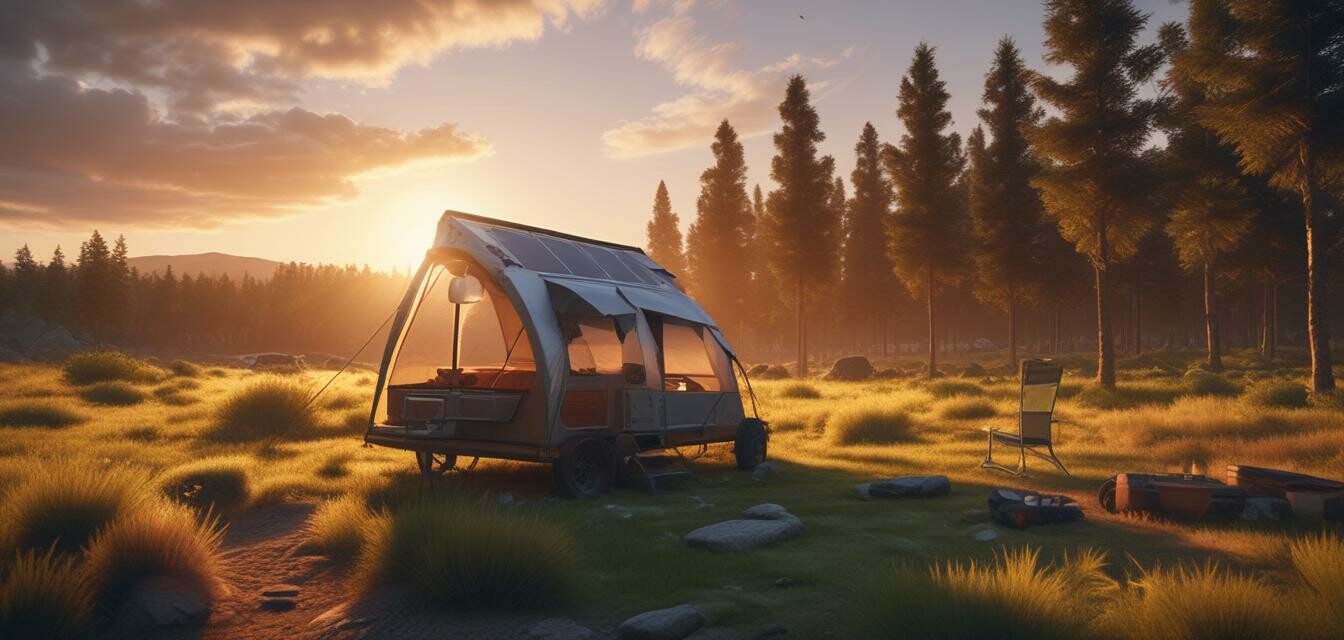
How to Optimize Solar Panel Placement for Maximum Energy
- Understand the importance of solar panel placement.
- Identify obstacles that can block sunlight.
- Learn about the best angles for sunlight capture.
- Consider seasonal changes in sun position.
As camping enthusiasts, we all crave comfort and convenience in the great outdoors. Solar panels can be a game changer for your camping experience, providing you with power for your gadgets and appliances. However, the placement of your solar panels plays a crucial role in their energy production efficiency. In this article, we'll explore expert tips on how to find the best placement for your solar panels while camping to harness maximum sunlight.
Why is solar panel placement important?
The effectiveness of solar panels is heavily influenced by their exposure to sunlight. Proper placement ensures that your panels can absorb as much direct sunlight as possible, resulting in higher energy production. Here are a few reasons why you should prioritize solar panel placement:
- Maximized efficiency: Well-placed panels capture more sunlight, leading to increased energy output.
- Reduced shadows: Shadows from trees, tents, or other objects can significantly reduce energy absorption.
- Adaptability: The ability to adjust positioning can help you respond to changing weather conditions.
Identifying optimal locations
Here are some tips for assessing potential locations for solar panel placement during your camping trips:
1. Survey the campsite
The first step involves surveying the campsite. Be on the lookout for:
- Large trees that can cast shadows.
- Hillsides that could block sunlight.
- Other campers and their setups that could obstruct your solar panel's exposure.
2. Checking sun patterns
Understanding sun patterns throughout the day is essential. Use the following tips:
- Track the direction of sunlight during different times of the day.
- Observe how shadows change as the sun moves.
- Use a compass to find solar noon when the sun is at its highest point.
3. Experiment with positioning
Don’t hesitate to adjust the placement of your solar panels for optimal performance. Here are some approaches:
- Position panels facing south for maximum exposure (if in the Northern Hemisphere).
- Angle panels at 30 to 45 degrees for effective sunlight capture.
- Adjust panels to follow the sun, if possible, for improved energy efficiency.
Proper setup techniques
Once you've identified the optimal location and angle for your solar panels, consider the following setup techniques:
1. Secure your panels
Make sure solar panels are securely anchored, especially in windy or stormy conditions. Use:
- Rope ties to bind panels to stable structures.
- Weight (such as rocks) to keep them in place on the ground.
2. Use adjustable brackets
Using adjustable brackets allows for quick angle changes throughout the day, enhancing energy capture.
3. Monitor performance
Regularly check the energy output of your solar panels to determine if adjustments are needed. Note any decrease in performance and make necessary adjustments.
Seasonal considerations
Keep in mind that the position of the sun changes with the seasons. Here are some helpful tips:
- In summer, the sun rises higher in the sky; adjust the angle of your panels accordingly.
- In winter, the days are shorter, so early setup and tracking are crucial.
- Consider bringing lightweight panels to accommodate easier adjustments.
Tools for effective solar panel placement
Utilizing tools can greatly assist in finding optimal solar panel placement:
| Tool | Benefit |
|---|---|
| Solar Angle Finder | Helps in determining optimal panel angle for maximum sunlight capture. |
| Sun Path Diagram | Provides a visual representation of the sun’s trajectory throughout the year. |
| Smartphone Apps | Many apps can track sunlight hours and recommend optimal setups. |
Final thoughts
Optimizing solar panel placement can dramatically improve your energy efficiency while camping. By following the tips outlined above, from identifying optimal locations to utilizing the right tools, you'll be well on your way to maximizing energy production. Enjoy your solar-powered adventures and make the most of your time in the great outdoors!
Pros
- Increased energy efficiency with proper placement.
- Enhanced convenience with solar power needs met.
- Adaptability to environmental changes.
Cons
- Initial setup might require some planning.
- Possible need for adjustments throughout the day.
- Weather conditions can affect energy absorption.
Explore more about solar-powered camping
For more information on solar-powered camping gear, check out our other content: